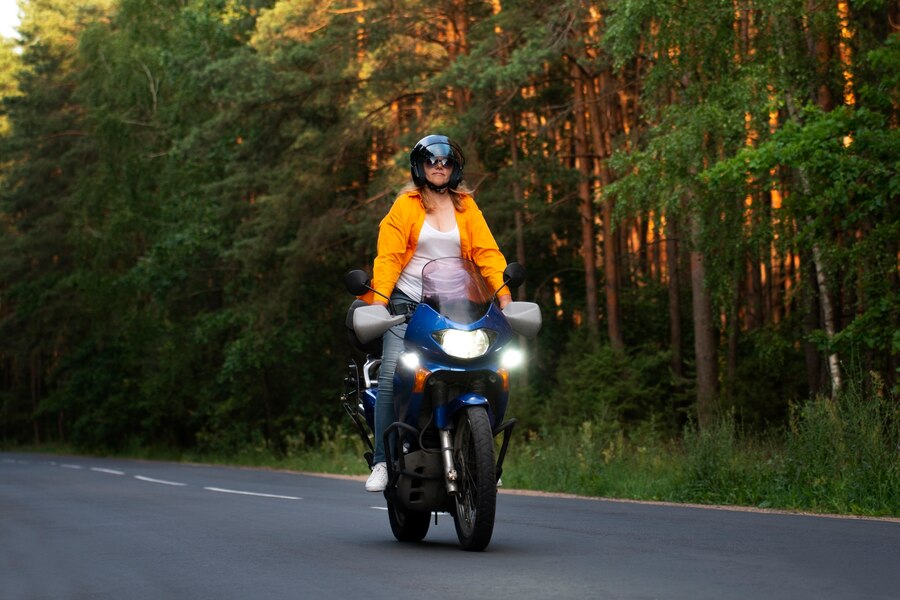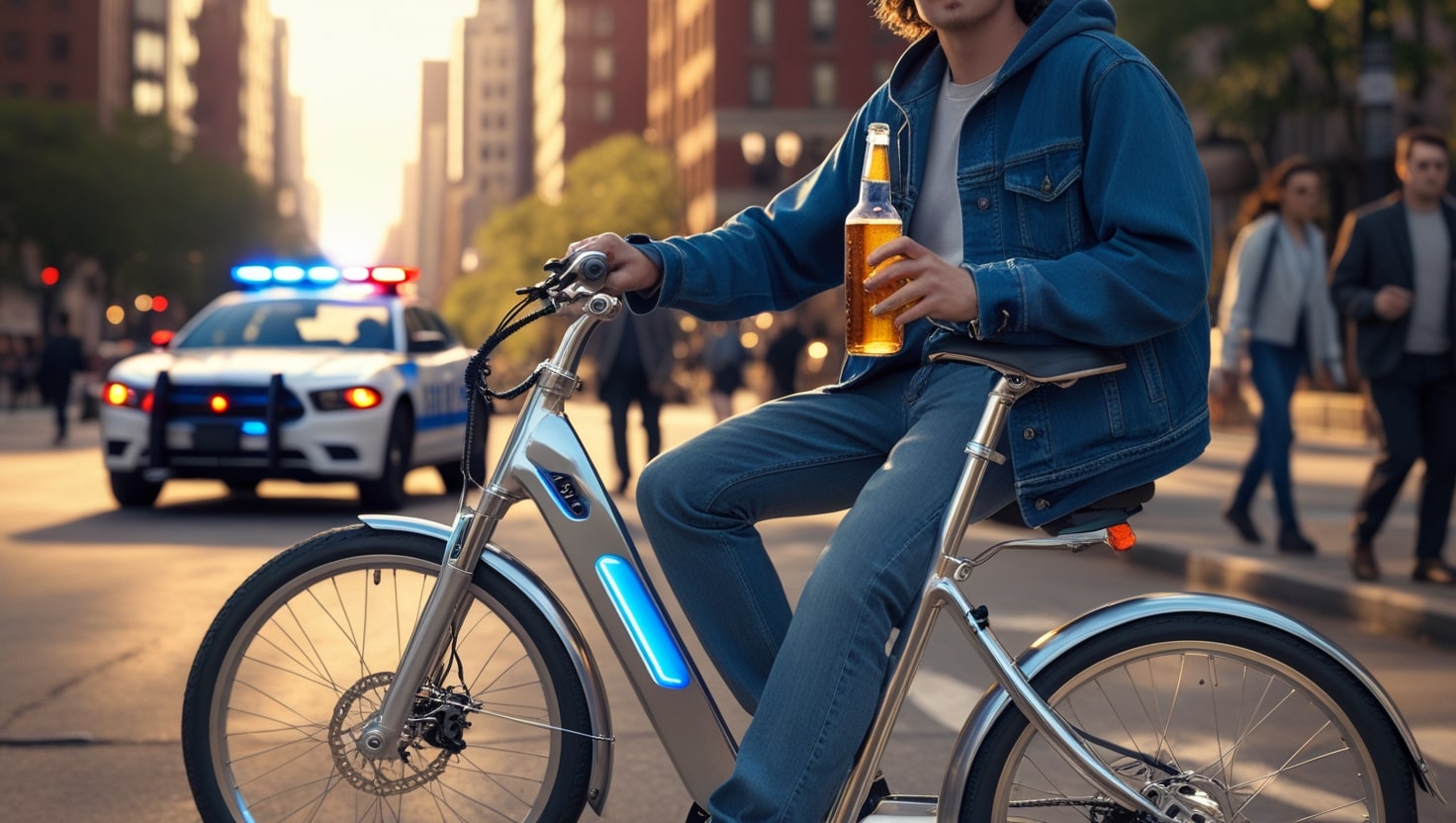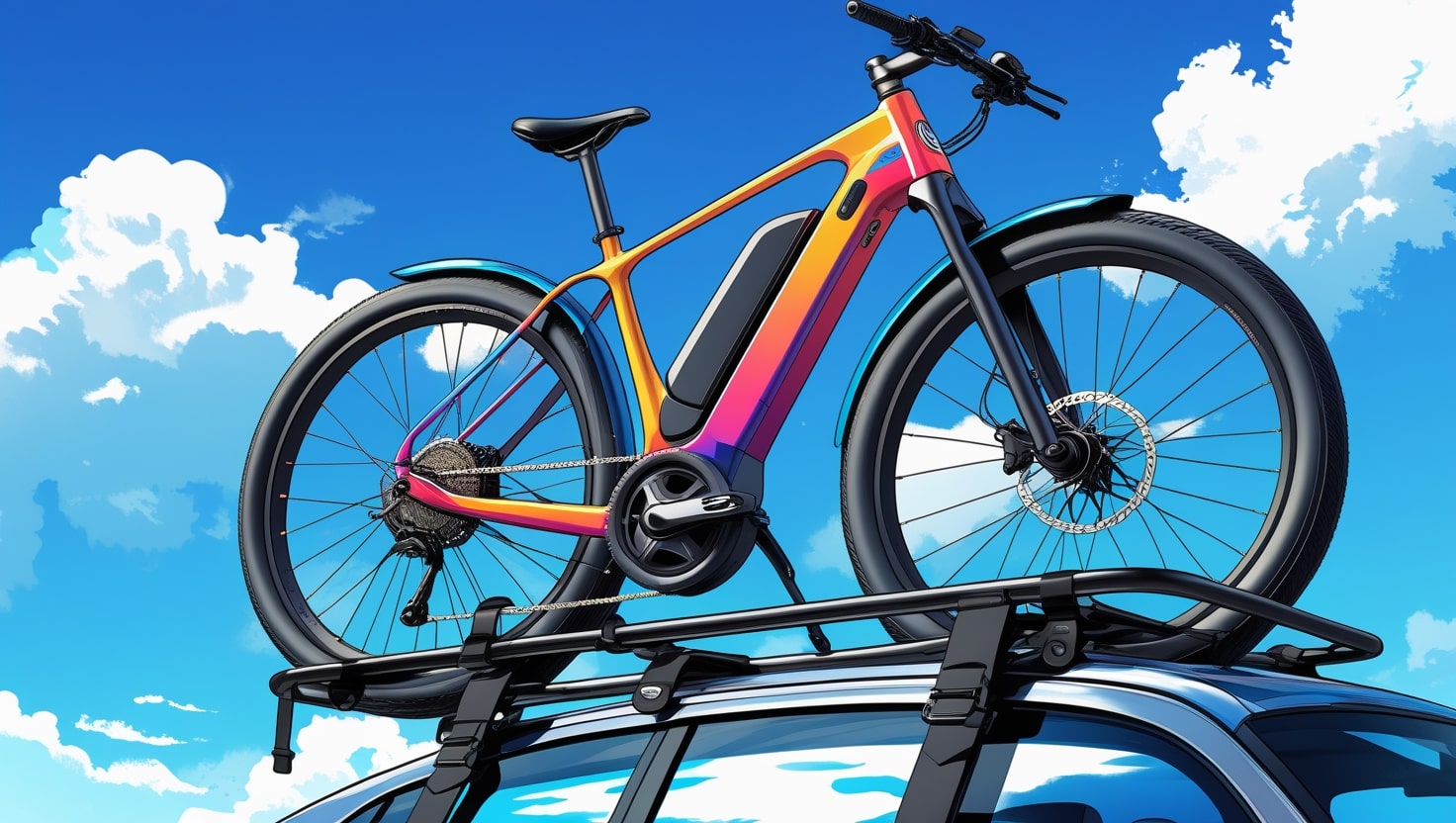As someone who has spent countless hours cruising down open roads, feeling the thrum of the engine and the wind in my face, I’ve developed a practical streak when it comes to understanding the potential lifespan of motorcycles.
Motorcycles are more than just modes of transportation. They pulsate with life, capturing the essence of freedom, excitement, and exuberance.The question of “how many miles do motorcycles last” isn’t just about numbers; it’s about experiences and the eventual transitions these bikes undergo from being a trusty steed to a garage-bound relic.
Riding a motorcycle is a transcendental experience, where every mile added is a testament to its durability and the joy it brings. The mode of transport is crucial not only for the practicality it provides but also for the connection it fosters with the environment around you.
How Many Miles do Motorcycles Last
When discussing Motorcycles and their lifespan, one of the most common questions is “How many miles do motorcycles last?” Typically, motorcycles last between 50,000 and 100,000 miles, though this range can vary significantly based on Factors like the type of bike, its maintenance schedule, and riding style.
Touring motorcycles, known for their durability on long rides, often surpass 75,000 miles with regular engine maintenance and careful riding. On the other hand, well-maintained sports bikes can also achieve high mileage. The longevity of these bikes is further enhanced by Records of consistent service, proper storage, and the use of advanced technology such as fuel injection systems which are important in increasing the durability of the motorcycle.
The Longevity of Two-Wheeled Machines
When pondering how many miles a motorcycle can endure, it’s not solely the motorcycle mileage that matters, but also the rigor of the engine maintenance schedule that it adheres to. Regular engine maintenance, akin to health check-ups for humans, is a key factor in sustaining the longevity of these machines.
The odometer can only tell part of the story; it’s the owner’s level of care that truly narrates the saga of its mileage. This comprehensive approach to upkeep ensures that each motorcycle not only survives but thrives across countless journeys, embodying a lasting life on the road.

The Type of Motorcycle and Its Impact on Mileage
Different motorcycles, from agile sport bikes to robust touring models, are equipped with different engine capacities, which affect their potential mileage.
| Type of Motorcycle | Typical Mileage | Factors Affecting Longevity |
|---|
| Touring Motorcycles | 75,000 – 100,000 miles | Robust construction, suitable for extensive travel, continuous maintenance |
| Sport Bikes | 20,000 – 50,000 miles | Built for high performance, aggressive handling, and regular maintenance. |
| Cruisers | 40,000 – 70,000 miles | Moderate performance, good maintenance practices |
| Adventure Bikes | 50,000 – 80,000 miles | Adaptable to a variety of uses with rigorous design and careful maintenance |
| Commuter Bikes | 30,000 – 60,000 miles | Frequent short trips, regular servicing, daily use wear and tear |
A motorcycle with high mileage and possibly showing wear is owned by a single person with detailed maintenance logs usually showing that it has been well maintained.
Related: How Much Does Motorcycle Weigh
Usage And Its Correlation To Motorcycle Mileage
Whether you use your motorcycle for daily commutes or occasional adventures can make a significant difference in how it ages. Just like footwear, where daily work boots endure more wear compared to special occasion shoes, motorcycles used in the daily grind, battling traffic and the elements, tend to age differently than those cherished by the weekend warrior as their pride and joy. This constant exposure can accelerate wear, affecting both the appearance and mechanical integrity of the bike.
Environmental Factors and Motorcycle Mileage
Whether riding under the unforgiving sun or facing the freezing cold, the environment significantly affects the durability of your motorcycle. Harsh winters can lead to rust and corrosion if a bike isn’t properly winterized, while extreme heat can stress the cooling system and fluids.
Similarly, humid climates might bring about more moisture-related issues, and dry conditions can introduce more dust and debris affecting air filters and engines.
Understanding and adapting to these conditions is crucial to preserve your motorcycle’s health and ensure that miles are accumulated gracefully.

The Role of Maintenance in Extending the Life of Your Motorcycle
For motorcycle enthusiasts, it’s well-known that regular engine maintenance is vital to extend both the mileage and life expectancy of their rides. This principle holds true year-round, but it becomes especially crucial during the winter months when many riders typically store their bikes. Whether dealing with an air-cooled engine or a liquid-cooled one, following the recommended maintenance schedule ensures longevity. Winter poses specific challenges that demand specific attention to prevent issues like freezing and corrosion, proving that proactive upkeep is essential no matter the season.
Related: What Goes On at Sturgis Bike Rally
Battery Care
Cold temperatures can be harsh on motorcycle batteries, significantly reducing their ability to hold a charge.
To ensure your battery survives the winter, it’s crucial to take proactive steps.
Separate the battery and store it in a cool, dry place. Utilizing a battery tender helps to maintain the charge and keep the battery in optimal condition.
Additionally, clean the terminals and apply a protective coating to prevent corrosion.
Fuel System Stabilisation
Fuel can degrade over time, potentially leading to starting issues by the spring if not properly managed. To effectively protect your fuel system and ensure smooth starts after storage, take a proactive approach:
- Fill the tank to prevent condensation, a common issue that can cause complications.
- Add a fuel stabiliser to help prevent fuel breakdown during periods of inactivity.
- Run the engine for a few minutes to distribute the stabiliser evenly throughout the system. This simple routine can significantly extend the operational lifespan of your motorcycle, ensuring it performs optimally when you’re ready to ride.
Tyre Maintenance
Proper tyre care is crucial, especially during winter storage, to prevent flat spots and extend tyre life. Here’s how you can keep your tyres in top condition:
- Inflate your tyres to the maximum recommended pressure to ensure they maintain shape and functionality.
- Elevate the motorcycle to take weight off the tyres, reducing stress and wear over time.
- Rotate the wheels periodically if your bike is in long-term storage; this simple step can significantly enhance tyre longevity and performance when spring rolls around.
Lubrication
Proper lubrication is essential not only for smooth operation but also to prevent rust, ensuring your motorcycle is ready to ride as soon as warmer weather returns. Before putting your bike into storage, it’s important to change the oil to remove contaminants that can cause internal damage over time. Additionally, applying a light coating of oil or rust preventative on exposed metal surfaces helps protect against corrosion during the colder months.
As part of your winter-specific maintenance tasks, don’t forget to lubricate the chain, cables, and other moving parts. This step is crucial in maintaining the life of the motorcycle and can significantly extend its usability. By incorporating these routines into your off-season care, you ensure that your bike will be ready to hit the road when you are. Keep in mind, that taking extra precautions during the off-season can extend the life of your motorcycle, ensuring many more enjoyable rides ahead.
How Riding Conditions Affect Motorcycle Longevity
The riding conditions and environment of a motorcycle significantly affect its longevity.
Different terrain and riding styles have a profound effect on deformation, affecting different parts of the motorcycle differently.

Highway Riding
Highway riding is often less stressful for your motorcycle compared to city driving due to several factors:
- Consistent speeds help reduce the strain on the engine, promoting longer engine life.
- Smooth surfaces encountered on highways minimise suspension wear, keeping the bike in better condition over long distances.
- Less frequent braking is required, which preserves the brake pads and rotors.
However, it’s important to note that prolonged high-speed riding can have drawbacks:
- It may lead to increased engine heat, potentially accelerating oil breakdown.
- Faster tyre wear occurs, particularly on the center tread of the tires due to the constant high-speed contact with the road.
- Higher fuel consumption can also impact fuel system components over time, necessitating more frequent maintenance checks and replacements.
Urban Riding
City riding comes with its unique challenges:
- Frequent stops and starts tend to increase clutch and brake wear, accelerating component degradation.
- Lower average speeds may lead to carbon buildup in the engine, impacting efficiency and longevity.
- Exposure to pollutants in urban areas can clog air filters more quickly, requiring more frequent maintenance.
On the bright side, city riding usually involves shorter trips, which can reduce the total mileage you add to your motorcycle.
Off-Road Riding
Off-road conditions are extremely demanding on motorcycles, testing every aspect of their durability and design:
- Uneven terrain heavily stresses the suspension components, demanding robust construction and occasional replacements.
- Dust and debris not only accelerate air filter clogging but also contribute to engine wear, making frequent replacements necessary.
- Frequent gear changes and varied throttle inputs typical of off-road navigation increase transmission wear, shortening the interval between maintenance sessions.
- Off-road bikes, specifically designed to handle these harsh conditions, still require more frequent maintenance to stay in optimal condition. This includes more regular oil changes to address contamination, frequent cleaning to prevent the buildup of dirt and debris, and more frequent inspection of suspension components to ensure safety and performance.
Extreme Weather Conditions
There are many myths about motorcycle longevity that can mislead or confuse riders. This section debunks common misconceptions and provides the facts about what really affects a motorcycle’s lifespan.
Riding in extreme weather, whether it’s sweltering hot or freezing cold, significantly impacts the longevity of motorcycles:
- Extreme heat can lead to faster oil breakdown and increased engine wear, as the lubricants degrade more quickly under high temperatures.
- Cold weather puts a strain on batteries and forces engines to work harder during warm-up, which can hasten wear and reduce efficiency.
- Wet conditions often accelerate rust formation, but this can be mitigated if properly addressed with regular maintenance and protective measures.
Related: When is Arizona Bike Week?
Impact on Specific Components
| Component | Highway Impact | Urban Impact | Off-Road Impact |
|---|
| Engine | Moderate wear from consistent speeds | Potential carbon buildup from low-speed operation | High wear from varied loads and potential debris |
| Tyres | Center wear from straight-line riding | Even wear, potential damage from road hazards | Rapid wear, potential punctures |
| Suspension | Minimal wear on smooth roads | Moderate wear from potholes and bumps | High wear from constant movement |
| Brakes | Low wear due to infrequent use | High wear from frequent stops | Moderate to high wear, potential contamination |
Technological Advances in Motorcycles
As we surge into the future, the motorcycles of today have become true marvels of technology, boasting advancements that not only promise longer lifespans but also better mileage.
Traditional improvements like fuel injection systems have replaced old carburetors, offering greater efficiency and reliability. The introduction of electric and hybrid motorcycles marks a significant technological leap in recent years, reflecting how innovations are reshaping our understanding of what affects motorcycle longevity and maintenance.
These changes involve the use of advanced materials and engineering techniques designed to reduce wear and tear, ensuring that the bikes of today exceed the endurance of those from the past.
Related: Bike Packing Fork Bags
Motorcycle Technology Impact on Longevity
| Technology | Description | Impact on Longevity |
|---|---|---|
| Fuel Injection Systems | More efficient fuel delivery compared to carburettors | Improves fuel efficiency, reduces maintenance, extends engine life |
| ABS (Anti-lock Braking System) | Prevents wheel lock-up during braking | Enhances safety, reduces wear on brake components |
| Traction Control | Prevents wheel spin during acceleration | Improves tyre longevity, enhances overall safety |
| Advanced Materials | Use of lightweight and durable materials like carbon fiber | Reduces wear and tear, enhances performance and lifespan |
| LED Lighting | Brighter and more efficient lighting system | Lasts longer than traditional bulbs, reduces electrical load |
| Electric Powertrains | Electric motors are more efficient and require less frequent maintenance | Reduced wear and tear on components, extends overall lifespan |
| Hybrid Systems | Combines the benefits of electric and internal combustion systems | Balances efficiency and range, potentially extending overall lifespan |
Electric motorcycles are revolutionising the concept of motorcycle longevity. These vehicles feature fewer moving parts compared to traditional internal combustion engines, which translates to significantly less maintenance. The reduction in mechanical complexity not only makes these bikes more reliable but also contributes to a longer overall lifespan for the vehicle. Battery packs, a critical component of electric bikes, typically have a lifespan of 3 to 10 years, but with proper care, they can last even longer.
Hybrid motorcycles, which combine electric motors with internal combustion engines, offer a balance between the efficiency of electric power and the range of traditional fuel. This synergy helps in reducing the strain on individual components, which can potentially extend the overall lifespan of the motorcycle. Additionally, ABS and traction control systems not only contribute to rider safety but also prevent the kind of hard riding that can shorten a bike’s life.
LED lighting systems, which are brighter and more efficient than traditional bulbs, reduce the electrical load on the motorcycle’s system, further enhancing longevity. Embracing these technological wonders is a wise investment for those looking to maximise their motorcycle’s mileage potential. As electric and hybrid technology advances, we expect to see significant increases in both the durability and performance of motorcycles in the coming years.
Related: Best Road Cycling Sunglasses
Electric Motorcycles: The Future of Longevity
Electric motorcycles are changing the realm of two-wheeled vehicles, not only by improving performance and reducing environmental impact but also by increasing their durability and simplifying maintenance requirements.
These advanced machines are setting new standards for the lifespan of motorcycles and the level of maintenance they need during their use.
Lifespan of Electric Motorcycles
Electric motorcycles are gaining traction as a durable alternative to traditional internal combustion engine (ICE) counterparts due to their inherent simplicity and reduced wear and tear.
The heart of an electric motorcycle is its electric motor, which theoretically can last for decades with minimal maintenance. This is a stark contrast to ICE motorcycles, which have hundreds of moving parts and require more frequent care. The major advantage lies in the electric motors having typically only one moving part—the rotor. This simplicity directly translates to less wear and potentially a longer overall lifespan.
However, the longevity of an electric motorcycle is primarily determined by its battery pack. Typically, batteries in contemporary electric motorcycles are designed to last between 3 and 10 years or about 100,000 to 200,000 miles, before they need to be replaced.
With diligent maintenance and continued improvements in battery technology, these estimates are expected to increase, increasing both the functionality and appeal of electric motorcycles as a viable, environmentally friendly transportation option.
Maintenance Differences
Maintenance for electric motorcycles is significantly different from that of traditional bikes:
- Electric motorcycles benefit from the absence of several routine tasks: No oil changes, filter replacements, spark plug replacements, or valve adjustments are necessary.
- Thanks to regenerative braking, there is reduced brake wear, eliminating some common brake maintenance tasks.
- Additionally, No exhaust system maintenance is required, further reducing upkeep efforts.
- These benefits lead to reduced maintenance costs and fewer servicing needs.
- However, electric motorcycles do require unique maintenance, such as battery care and software updates, which are crucial for optimal performance and longevity.
Long-Term Cost Benefits
While the initial purchase price of electric motorcycles is often higher than comparable ICE models, the long-term cost benefits are substantial:
- Lower fuel costs are evident as electricity is cheaper than gasoline, offering daily savings.
- Reduced maintenance costs arise because there are fewer parts to replace and service.
- Many owners benefit from potential tax incentives and rebates available in many regions.
- Electric motorcycles also experience lower depreciation rates due to their simpler technology and longer lifespan.
- Overall, these factors result in significant savings over the life of the vehicle, making electric bikes a financially wise choice for electric motorcycle owners.
Future Developments
As battery technology continues to advance, the future of electric motorcycles looks bright with expectations for longer-lasting and more efficient models. Innovations such as Solid-state batteries which offer higher energy density and faster charging times could lead to potentially longer lifespans for these vehicles. Currently, electric motorcycles are still evolving, but they already represent a promising future for enhancing motorcycle longevity.
Their simpler mechanics and reduced maintenance needs, coupled with improving battery technology, are poised to set new standards for how many miles motorcycles can last. This shift in technology not only promises to change the way we think about motorcycle durability but also significantly impacts the overall sustainability of motorcycle transportation.
Dispelling the Myths: Mileage as a Measure of Motorcycle Health
High mileage on a pre-owned motorcycle does not necessarily indicate poor quality. Instead, it should be evaluated in the context of how well the owner has maintained it.
Rather than focusing solely on mileage, the general condition of the bike is more important.
Beyond the numbers: assessing a motorcycle's condition
When evaluating motorcycle’s condition, mileage provides just a numerical perspective. Truly assessing a bike’s health goes beyond these figures, requiring a look at the engine maintenance schedule and the efficiency of systems like the air-cooled engine. The presence of off-road miles might also suggest a different kind of wear on the motorcycle.
Tips for maximising your motorcycle's mileage
While maintenance may seem mundane, it plays a magical role in boosting your motorcycle’s mileage and ensuring its longevity. Following some practical advice on keeping your bike in tip-top condition is key.
Motorcycle storage
For motorcycles that aren’t used as daily riders and are stored during off-seasons or for extended periods, proper storage is crucial to maintain their condition and prevent unnecessary mileage wear. Placing your bike in a dry, climate-controlled environment helps prevent rust and battery drain, essential for keeping the motorcycle in optimal shape.
Additionally, implementing proper fuel stabilisation and conducting regular fluid checks will ensure that your motorcycle is ready for the road as soon as it’s taken out of storage. This attention to detail not only aids in preservation but also ensures that when the motorcycle is ridden, it is running at its best.
Riding style in motorcycle mileage
The way you ride your motorcycle has a significant impact on how many miles it can last. Riding style affects everything from engine wear to how often you’ll need to replace brakes and transmission components. Aggressive acceleration and hard braking are particularly tough on a bike, leading to faster wear of components and potentially shortening the lifespan of the motorcycle. Conversely, a smoother, more conservative riding style can greatly extend the life of your bike’s mechanical parts.
Riding smartly not only helps to save components from undue stress but also translates to consistent performance over time, keeping your motorcycle running well and mileage numbers climbing without compromising the machine’s integrity. Making a conscious effort to moderate how you command the throttle and navigate through gears can make a significant difference in how long your motorcycle endures the rigors of the road.
Resale Value and Mileage Correlation
The numbers on the odometer often serve as a double-edged sword in determining a motorcycle’s resale value.
While high mileage might suggest a well-used bike, potentially reducing its market value, a high-mileage motorcycle that has been meticulously maintained can be more attractive than a low-mileage bike that has seen neglect.
Transparency about maintenance history, proof of regular servicing, and the overall condition of the bike play crucial roles in maintaining a strong resale value, regardless of the miles traveled.
The hidden value in high mileage motorcycles
While high mileage on a motorcycle may deter some riders, these vehicles often have undiscovered value. A motorcycle with high mileage may not only show signs of wear. It can also show careful maintenance by the previous owner and have a more extensive history than motorcycles with a single owner.
In Summary
The real adventure of owning a motorcycle is not just in the miles it has racked up, but in the care it receives along the way. With proper TLC, including regular check-ups and a loving touch, you’d be amazed at how effortlessly bikes can breeze past the 50,000-mile stone—it’s really no big deal. It’s all about the journey, appreciating each mile for its own unique story, especially when they’re cared for with just a bit of heart.
FAQs
How can I determine if a used motorcycle's high mileage is a concern or a sign of good upkeep?
When considering a used motorcycle with high mileage, it’s crucial not to view this as an immediate concern but rather as a potential sign of good upkeep. It is essential to examine the bike’s maintenance and storage records carefully. For example, if a touring motorcycle shows 80,000 miles on the odometer yet remains in excellent shape, this usually suggests that the previous owner took great care of it. Thorough service records and evidence of proper storage are key indicators that the bike has been well-maintained, despite the higher mileage count.
What preventive measures can extend the life of my motorcycle?
To extend the life of your motorcycle, adopting a series of preventive measures is crucial. Regular engine maintenance is pivotal; always follow the engine maintenance schedule provided by the manufacturer to ensure that components like air filters are kept clean, which is especially important for air-cooled engines. Regular oil changes are essential to ensure the engine runs efficiently. Additionally, taking proper care of tires, brakes, and chains plays a crucial role in preventing wear that could otherwise shorten your motorcycle’s lifespan.
Are there specific types of motorcycles known for reaching higher mileage milestones?
When it comes to motorcycles reaching higher mileage milestones, specific types stand out for their durability. Touring motorcycles are particularly renowned for their ability to clock impressive mileage figures, often surpassing 100,000 miles. This capability is attributed to their robust build and design optimized for long-distance travel. On the contrary, sport bikes tend to have a shorter lifespan due to their high-performance nature, which can stress the bike’s components more intensely.
How does my riding style affect my motorcycle's longevity?
Your riding style significantly affects your motorcycle’s longevity. An aggressive riding style, characterized by rapid acceleration and hard braking, tends to increase wear and tear on the engine, brakes, and transmission. Conversely, adopting a smoother, more calculated riding style can greatly help in maintaining consistent performance and prolonging the life of your motorcycle’s critical components.








